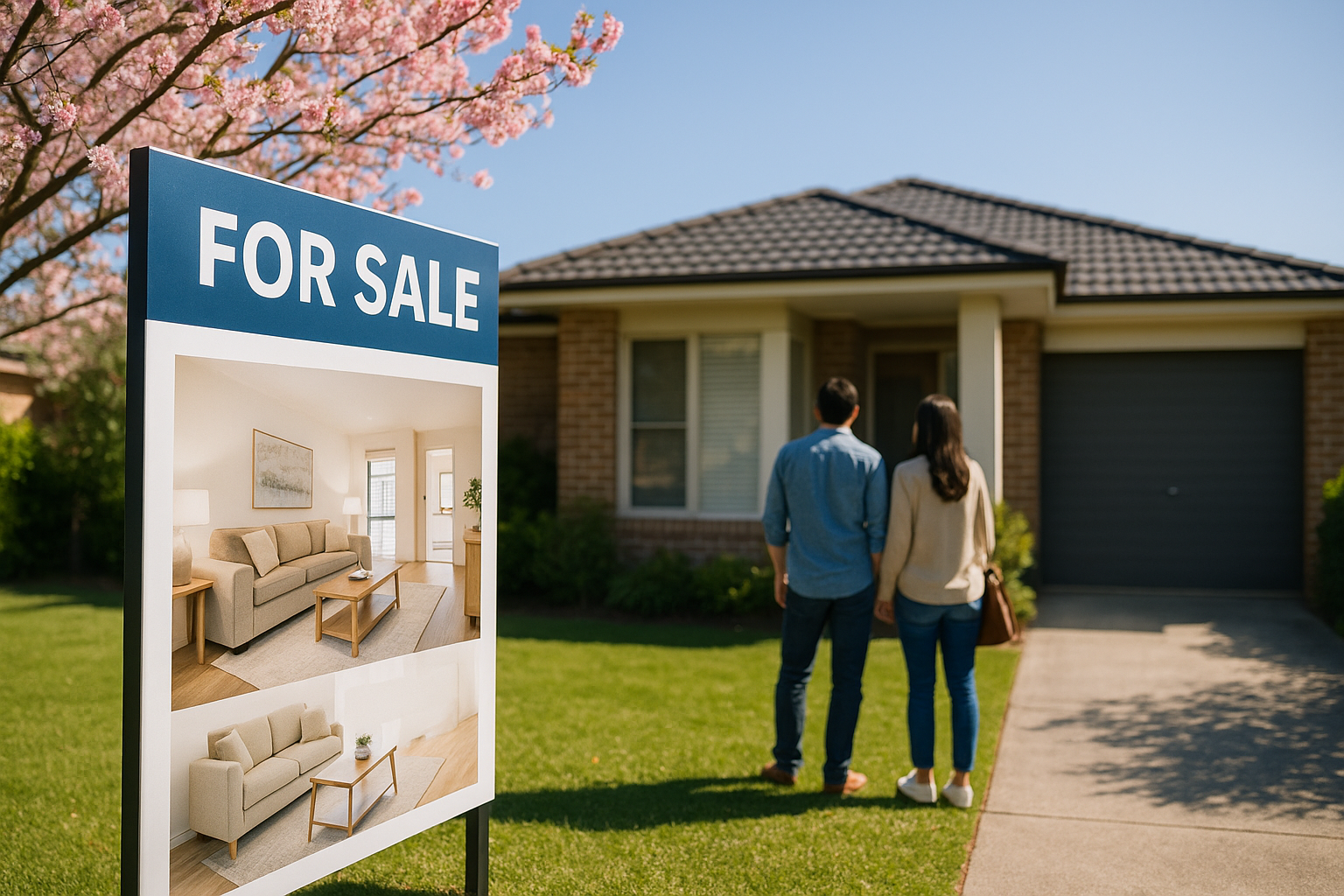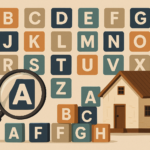
Key takeaways
Australians are moving beyond lifestyle-only features (like pools) and searching for homes that offer practicality, income potential, and long-term value.
Across cities like Sydney and Perth, granny flats are highly sought after. They appeal to investors for their ability to boost rental yields and accommodate multigenerational living.
In Melbourne, Canberra, and Perth, townhouses now directly compete with detached homes at similar price points. This reflects a broader acceptance of medium-density living and strong long-term demand.
Spring has always been the season that reinvigorates Australia’s property markets.
It’s the time of year when listings surge, buyers come out in force, and competition intensifies.
But beyond the headlines, spring also reveals something far more telling: what Australians are actually searching for in a home.
And this year, Domain's data shows that buyers aren’t just dreaming, they’re making practical trade-offs, influenced by affordability pressures, multigenerational living, and a desire for character and lifestyle.
As Domain’s Chief of Research and Economics, Dr Nicola Powell, explained:
“Spring is always a time of renewed optimism in the housing market, but what we’re seeing this year is a deeper reflection of how affordability pressures, lifestyle shifts, and family dynamics are reshaping buyer priorities.”
Let’s unpack what’s happening in each of our capital cities, and what it means for both homeowners and investors.
Sydney: functionality first
Sydney, Australia’s most expensive housing market, is showing a marked shift in buyer behaviour.
This spring, according to Domain's data, “granny flat” is the top search term, reflecting growing demand for properties that can generate rental income or accommodate extended families.
Lifestyle features still matter: “waterfront” and “view” remain highly ranked, but “pool” has dropped from the top spot to fourth.
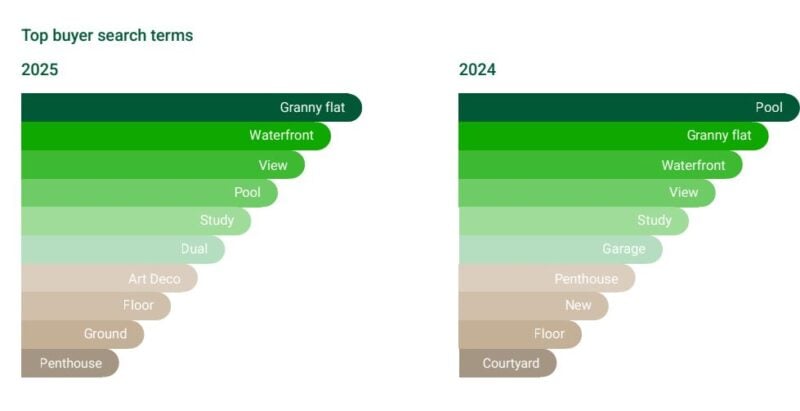
Instead, buyers are rediscovering character, with “art deco” moving up the list.
Sydney’s price ladder explains the trend.
Houses make up 74% of searches but at a median of $1.8 million, many buyers are scaling down, either to smaller detached homes, townhouses ($1.2 million), or units ($900,000).
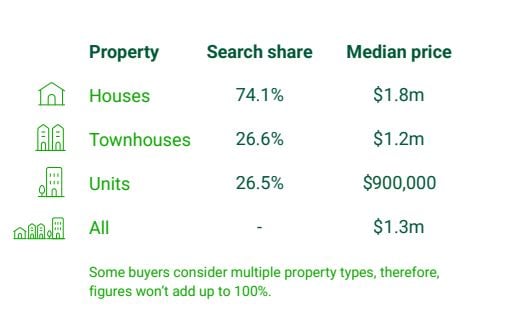
Dr Powell noted:
“Sydney buyers are having to flex across property types and price points. For many, it’s about trading land for space, or considering units and townhouses as genuine alternatives to a detached home.”
Melbourne: character and medium-density living
Melbourne has always leaned into culture and design, and that’s clearer than ever.
This spring, “art deco” overtook “pool” as the most searched term, with “heritage” and “warehouse” conversions also high on the list. according to Domain's data.
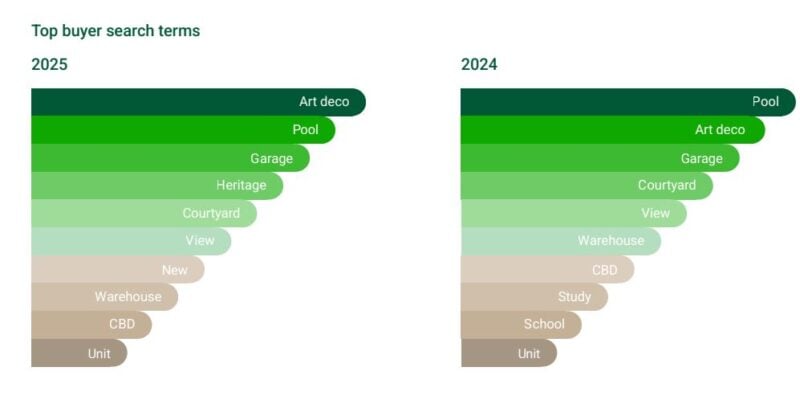
Townhouses are booming, making up 38% of searches, the highest nationally.
Units also account for nearly a quarter of searches, highlighting Melbourne’s growing acceptance of medium-density living.
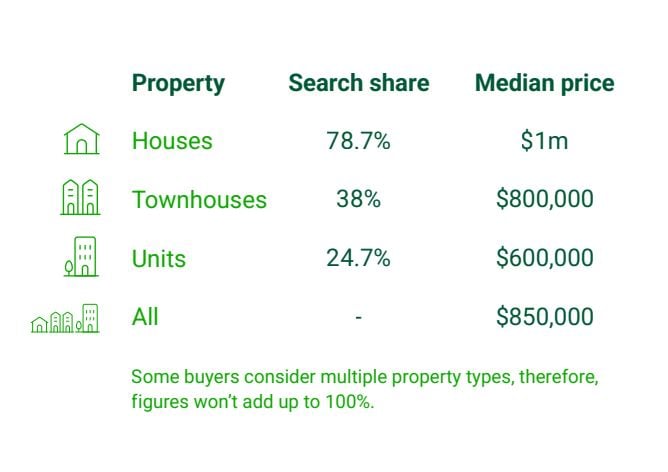
Three-bedroom houses at $1 million remain the benchmark, but three-bedroom townhouses are right alongside at the same price point.
That equivalence shows townhouses are no longer “second best”, they’re being seen as a genuine substitute.
Dr Powell observed:
“Melbourne buyers are demonstrating that character and architectural charm matter deeply. But affordability pressures are nudging them towards townhouses and units, which now compete directly with detached homes at the same price points.”
Brisbane: pools, views and the return of the city
In Brisbane, lifestyle still dominates: “pool,” “waterfront,” and “view” top the rankings.
But what’s new is the re-emergence of “city” in the top 10, showing renewed appetite for inner-city living after years of preference for suburban sprawl.
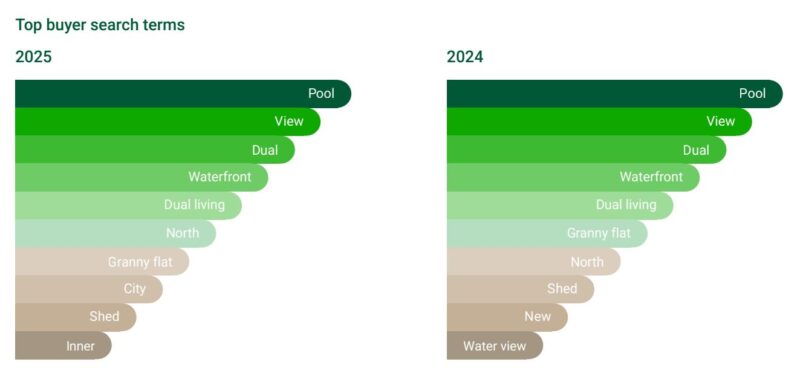
Interestingly, “dual living” and “granny flat” are both rising, highlighting the demand for flexible living arrangements.
With houses at a median of $950,000, buyers are considering townhouses ($800,000) and units ($750,000) as practical entry points.
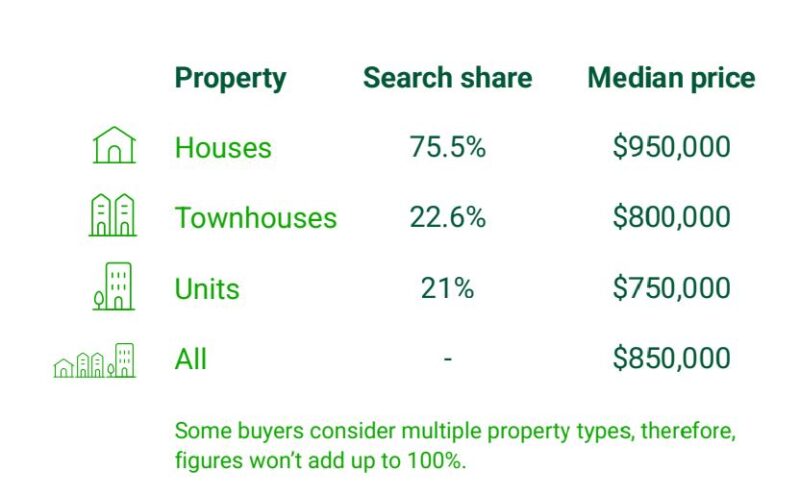
Adelaide: affordability and incentives
Adelaide continues to be Australia’s most house-focused market: 82% of searches target detached homes, reflecting its relative affordability.
Lifestyle features dominate (“pool” and “view”), but one of the most telling inclusions is “stamp duty.”
Buyers are actively searching for properties offering concessions or incentives, proof that affordability remains front of mind.
Three-bedroom houses at $850,000 lead searches, while two-bedroom homes at $750,000 remain a popular choice for buyers wanting to stay detached rather than move into medium density.
Perth: lifestyle and versatility
In Perth, outdoor living remains front and centre, with “pool,” “view,” and “waterfront” topping the searches.
But the standout change is “granny flat” moving up to second place.
With houses and townhouses now sitting at the same $850,000 search price, buyers are weighing land versus medium-density options.
Units at $600,000 provide the affordability anchor.
Dr Powell highlighted:
“Perth buyers are balancing strong demand for lifestyle features with the need for versatility — granny flats and sheds are becoming increasingly attractive.”
Canberra: orientation and work-from-home
Canberra stands out for its unique buyer priorities.
“North” is the top search term, underscoring the value placed on sunlight and orientation.
“Study” remains in the top three, making Canberra the only capital where home offices are still a major drawcard.
With houses at $1 million, townhouses at $800,000, and units at $650,000, the ACT has one of the clearest affordability ladders.
Three-bedroom houses and townhouses at $1 million directly compete, showing the mainstream appeal of medium density.
Final note for investors
As I always say, when it comes to property investment, the focus should be on investment-grade properties in A-grade locations.
Never follow a trend or buy in hotspots or growth areas because these won’t give you the long-term growth that you’re looking for.
I’m talking about areas and properties which hold their value over the long term, rather than benefit from an uptick in demand.

